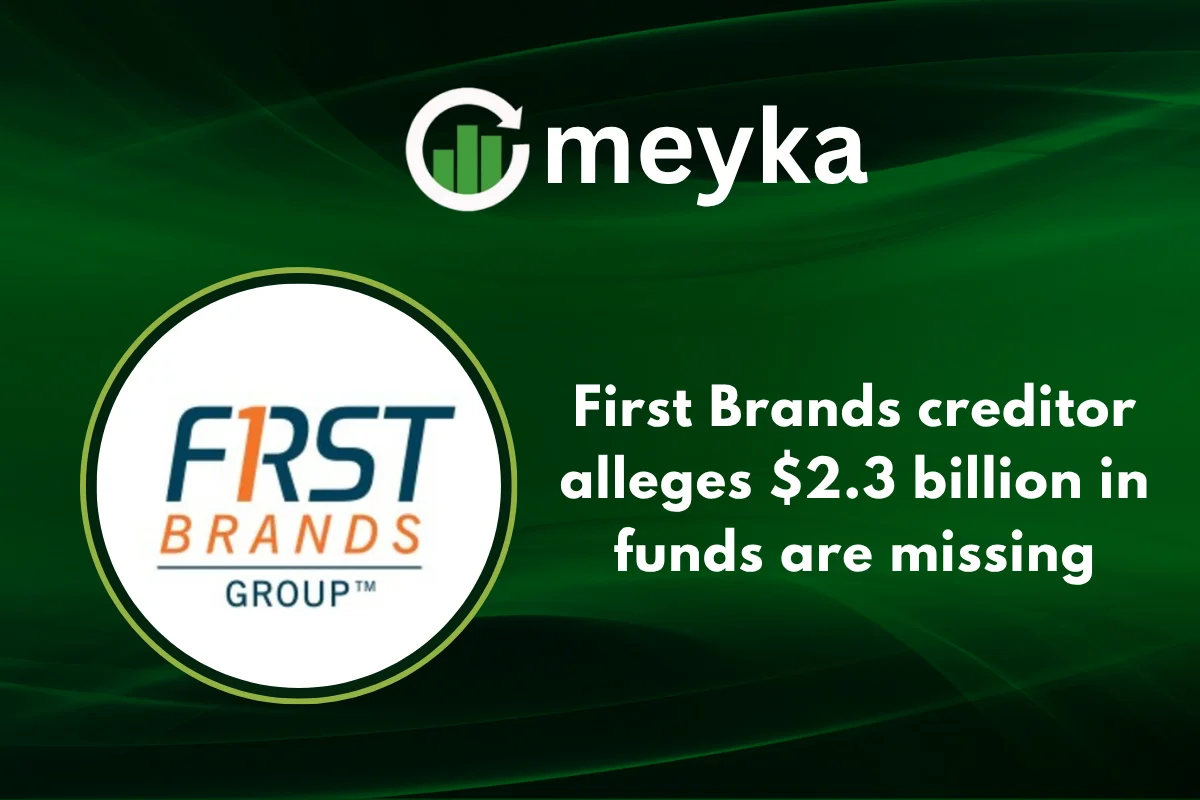First Brands Creditor Alleges $2.3 Billion in Funds Are Missing
In a stunning turn of events, a major First Brands creditor, Raistone, has publicly alleged that up to $2.3 billion in funds have “simply vanished” from the books of auto parts giant First Brands. The creditor is demanding a full independent examination of the company’s collapse and accounting practices.
This bombshell accusation has intensified the ongoing crisis surrounding First Brands. The company is burdened with more than $11.6 billion in liabilities. It is already facing scrutiny over complex financing arrangements and opaque accounting practices. As the story unfolds, the implications for creditors, investors, and the wider credit markets are becoming increasingly serious.
The Collapse: How Did First Brands Get Here?
First Brands expanded rapidly through debt-financed acquisitions. The company used its strong supply chain and well-known aftermarket brands like FRAM, Raybestos, and TRICO to fuel this growth. However, the expansion came with heavy financial obligations. When financial pressures increased, partly due to higher tariffs on auto parts, the cracks in its business model began to appear.
In late 2025, First Brands filed for Chapter 11 bankruptcy protection. The filing came in tandem with revelations of serious irregularities in how the company financed itself, especially through off-balance sheet arrangements.
Key issues now under investigation include:
- Factoring irregularities: First Brands apparently sold or pledged customer invoices (receivables) to third parties in ways that may have allowed the same invoice to be pledged more than once.
- Commingled collateral: Inventory and other assets meant to secure financing appear mixed with other collateral pools, making it unclear which creditors have rightful claims.
- Unaccounted funds: Raistone’s court filings assert that only $12 million remains in First Brands’ bank account, with the rest of the purported collateral or cash unavailable.
- Undisclosed fees and side letters: Jefferies, which provided invoice financing via its Point Bonita fund, is under fire for “side-letter” agreements enabling extra fees not seen by other lenders.
Raistone’s Claims & the Push for an Independent Examiner
Raistone was one of the co-financiers involved in many of First Brands’ off-balance sheet transactions. The company is owed at least $172 million by First Brands. It also faces additional exposure through partners connected to $631 million in First Brands invoices. Raistone believes that letting First Brands’ management investigate these accounting issues internally is inadequate, given the scale of possible misconduct.
The creditor is urging the bankruptcy court to appoint an independent examiner with no direct ties to First Brands. This third party would review the company’s past transactions, trace the missing assets, and prepare a transparent and credible report.
Financial Exposures & Shockwaves in Credit Markets
The First Brands collapse has sent tremors across financial markets, especially those tied to private credit, trade financing, and leveraged lending.
- Jefferies / Point Bonita: Jefferies recently disclosed that its fund, Point Bonita Capital, holds approximately $715 million in receivables tied to First Brands’ customers. Because many of the invoices backstop the fund, any disruption threatens Jefferies and its investors.
- UBS / O’Connor exposure: UBS has disclosed over $500 million of exposure via its funds and supply-chain finance arrangements.
- Other lenders: Onset Financial, a leasing firm based in Utah, holds about $1.9 billion in claims against First Brands. The company has objected to the rescue loan arrangements, arguing that it has priority rights to the collateral.
These exposures raise broader concerns across the stock market, particularly for AI stocks and debt-heavy industries, where leverage and hidden obligations may hide under the surface. Investors now demand greater transparency and due diligence, not just on corporate balance sheets, but off-sheet risks too.
Next Steps & Legal Battlegrounds
As events evolve, here’s what we expect to play out:
Court ruling on independent examiner
The bankruptcy judge must decide whether to grant Raistone’s request. If approved, an examiner would have broad authority to audit prior transactions, demand documents, and report findings.
Priority disputes among creditors
Lawsuits over collateral pledging, inventory claims, double pledges, and commingling will pit off-balance sheet financiers against on-balance sheet lenders.
Recovery and tracing of missing funds
Investigators will trace receipts, bank accounts, transfers, and tax records. Any recovered assets will likely be distributed according to bankruptcy priorities.
Rescue financing and restructuring
First Brands already obtained a court-approved $500 million debtor in possession (DIP) loan, part of a $1.1 billion rescue package, to stabilize operations. However, objecting creditors like Onset have challenged this loan, potentially slowing disbursement.
Impacts on investor confidence
The case may set precedents about the use of hidden financing tools and the role of independent examiners in corporate collapses. It could also influence stock research and risk models for industrial and auto suppliers across markets.
Why This Matters to Investors & Creditors
- Due diligence risk: Many lenders and investors lacked full visibility into First Brands’ off-sheet deals. This collapse demonstrates how hidden liabilities can undermine even large firms.
- Credit market contagion: The unraveling of one major player can spread shock to counterparties, funds, and institutions linked by trade financing. This is especially relevant for stock market watchers evaluating sector risk.
- Litigation and recovery potential: With an independent examiner and aggressive creditor claims, there may still be a path to recover parts of the missing funds—but the results remain highly uncertain.
- Disclosure standards: Regulators and courts may demand stricter oversight of off-balance sheet arrangements to prevent similar cases of sudden accounting “disappearances.”
Key Takeaways
- A First Brands creditor (Raistone) alleges as much as $2.3 billion is missing, asking for an external investigation.
- The company’s collapse is rooted in complex factoring schemes, side letters, commingled assets, and possible double pledging.
- Major financial institutions like Jefferies and UBS face significant exposure tied to First Brands.
- The coming battle over creditor rights, forensic accounting, and restructuring will shape how distressed firms are handled going forward.
FAQs
A creditor is an entity to which First Brands owes money, such as Raistone or funds holding receivables. In bankruptcies, creditors may be secured or unsecured depending on whether they hold collateral or legal priority.
This often arises from opaque accounting practices, hidden side agreements, double-pledging of collateral, or off-balance sheet transactions where monies are diverted or misreported.
An independent examiner is an outside party appointed by the court to investigate a debtor’s financial affairs objectively. Raistone insists on one to ensure impartial scrutiny, especially given allegations that First Brands’ own management cannot be trusted to self-investigate.
Disclaimer:
This content is made for learning only. It is not meant to give financial advice. Always check the facts yourself. Financial decisions need detailed research.






